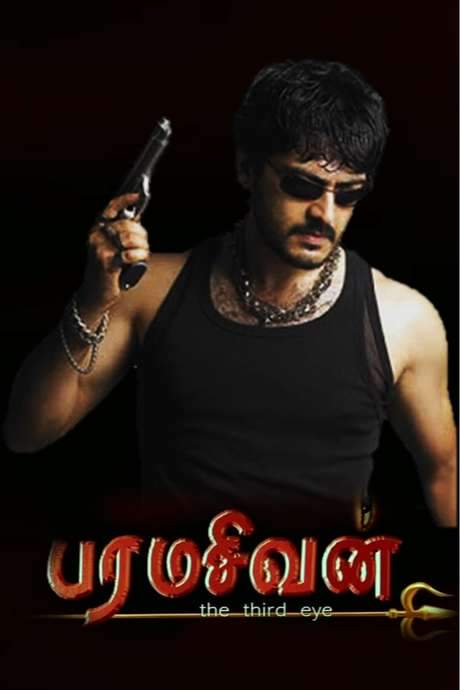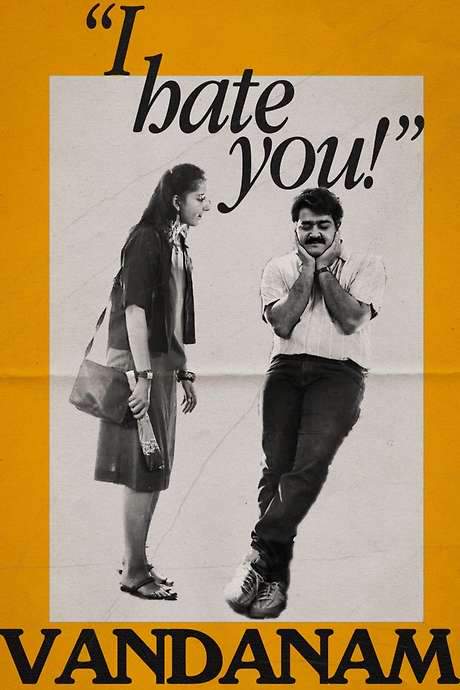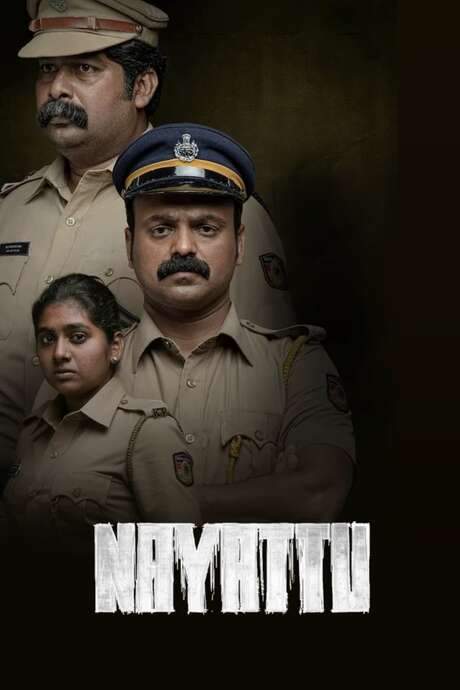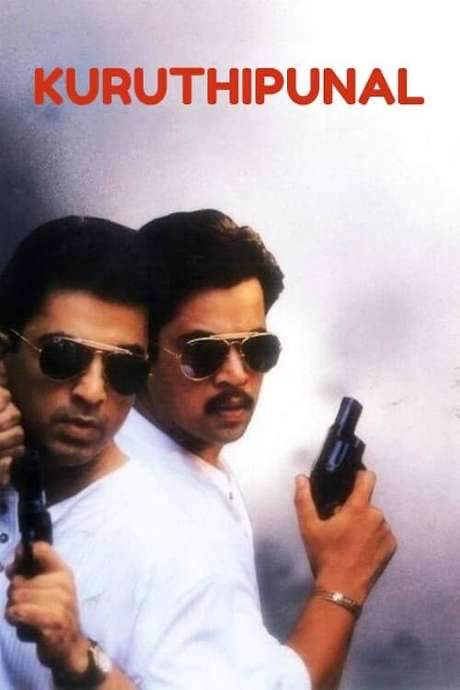Warning: spoilers below!
Haven’t seen Unnaipol Oruvan yet? This summary contains major spoilers. Bookmark the page, watch the movie, and come back for the full breakdown. If you're ready, scroll on and relive the story!
Unnaipol Oruvan (2009) – Full Plot Summary & Ending Explained
Read the complete plot breakdown of Unnaipol Oruvan (2009), including all key story events, major twists, and the ending explained in detail. Discover what really happened—and what it all means.
Kamal Haasan stars as Govindan Raghavan Maarar, the recently dismissed Commissioner of Police of Chennai, who narrates the film in a reflective voice-over about the sudden end of his career and the extraordinary crisis that follows. In the opening moments, a nameless, calculating man quietly engineers chaos from the shadows: he plants a travel bag at a crowded train station, then deposits another bag inside a police station toilet under the guise of filing an FIR, before establishing a high-tech base on a rooftop at a construction site. This enigmatic figure swiftly proves that he wields more than just fear—he can manipulate space, time, and people with alarming precision.
As the city learns that five bombs have been planted to detonate within four hours, the caller demands direct talks with a senior government official who has the authority to bargain. The police scramble to trace the caller while keeping the public calm, tapping every resource at their disposal. A news reporter, Natasha Rajkumar, is summoned to the Anna Salai police station on the caller’s instructions to witness the unfolding crisis firsthand. In the early hours, the Commissioner is shown how precarious the situation is when the bomb squad discovers a live device at the police station and fights against an ominous countdown with only minutes to spare. The grim reality of the threat begins to sink in as Natasha reports live from the scene, and the city braces for a potential catastrophe.
A fierce discussion erupts about who should negotiate with the caller. The Chief Secretary ultimately entrusts the position to the Commissioner, granting him broad, temporary authority to steer the negotiations. The caller’s taunts probe into the core of the state’s power—philosophical questions about religion and morality—while escalating his demands: the release of three terrorists and one convicted arms seller arrested years earlier by the Commissioner. To outmaneuver the caller’s high-tech operations, the police bring in a young IIT dropout who can hack the caller’s rapidly changing phone numbers and locations, a crucial move in an increasingly virtual chess game.
Throughout this tense period, the team works to assemble a facial composite of the caller with the help of the officer to whom the caller had approached to lodge the fake FIR. Yet the identity and whereabouts of the caller remain elusive as time slips away. In a bid to flush out the truth, the Commissioner and his team enlist the help of the mysterious hacker, whose reluctance to reveal information adds another layer of suspense to the investigation.
As the clock ticks, the Commissioner approves a bold plan: two of his trusted officers, Arif Khan and Sethuraman (also known as Gautham Reddy in the Telugu version), will escort the four high-value prisoners to a remote airstrip at Sholavaram. The caller confirms the identities of the four men through a conference call with Arif and the Commissioner. He then orders Arif and Sethuraman to release the prisoners and leave them at a designated spot, handcuffed and vulnerable. But Arif refuses to relinquish Abdullah, a move that disrupts the caller’s carefully choreographed scheme and signals that there is more at stake than a simple blast-and-bargain.
When the others’ car explodes, killing the remaining captives, the caller reveals that Abdullah is alive and forces Arif and Sethuraman to kill Abdullah to satisfy the city’s fear and to extract critical information about bomb locations. The Chief Secretary informs the Commissioner that the Chief Minister must be brought into the loop, but the Commissioner remains resolute, insisting that he will bear the consequences of his actions. The scene shifts to a brutal showdown: Arif ends Abdullah’s life, and Sethuraman shoots Arif in the hand to stage a self-defense blow, a calculated sacrifice meant to blindside the public and authorities alike. The caller confirms the death on the news and declares that there are no more bombs anywhere in Chennai, delivering a chilling and concise statement about the nature of terrorism and the costs of safety.
In a final push, the Commissioner orders the IIT hacker to locate the caller’s hideout, but the hacker refuses to cooperate further. The caller, meanwhile, destroys his gadgets with a small explosive and disappears into the night, camouflaged and ready for the next move. The Commissioner closes the chase by catching up with him and offering a quiet, almost futile acknowledgment: the caller claimed to know his real name, but that detail holds no meaning in the grand scheme. The officials who were supposed to guard the city protected themselves by painting him as a recluse and ultimately fired the Commissioner. The story ends with a meditation on the incident’s elusive truth—its facts may vanish into records, but the memories of those who witnessed it endure. The Commissioner reflects that, despite its ambiguous moral weight, the sequence of events happened in a way that—perhaps for the best—shaped the city’s sense of justice and danger.
Characters and performances are anchored by a strong ensemble. The film opens with and is fueled by the imposing presence of Kamal Haasan, whose portrayal of a man undone by a crisis of governance anchors the emotional core. Supporting roles are brought to life by a slate of memorable talents: Mohanlal as I. G. Raghavan Maraar, the high-ranking official whose fate intertwines with the Commissioner’s; Anuja Iyer as Natasha Rajkumar, the intrepid reporter who becomes a conduit for the city’s fear and hope; Ganesh Venkatraman as Arif Khan, one of the two officers assigned to the critical handover, and Bharath Reddy as Inspector Sethuraman (Gautham Reddy in Telugu version), whose decisions push the mission toward a perilous brink. The film also features Anand Krishnamoorthi as Arun the Hacker, whose technical prowess becomes essential to unraveling the caller’s intricate web, and M. S. Bhaskar as the Complainant who sparks the initial legal and investigative thread. The broader cast—Lakshmi as the Chief Secretary, Sriman as Arvind Adhavar, Prem as Inspector Zakria, Santhana Bharathi as Karamchand Lala, R.S. Shivaji as Sub-Inspector Babu Rao, and Karate Raja as one of the terrorists—contributes to the dense, lived-in texture of the city under siege.
The narrative unfolds with a restrained, measured pace that gradually reveals the layers of control and chaos that define modern urban life. It explores how a city’s systems—police, government machinery, media, and technology—can be strained to their breaking points, yet still produce moments of courage, improvisation, and uneasy compromise. The film’s moral questions linger long after the explosions cease: when security is pursued through fear, who pays the price, and what does it mean to claim justice in a landscape where every action is amplified by the media and by a vigilant public?
Note: All actor names used above correspond to the cast information provided. Each time a character associated with these actors is introduced for the first time, the actor’s name is linked to their page as specified.
Last Updated: October 05, 2025 at 12:43
Unlock the Full Story of Unnaipol Oruvan
Don't stop at just watching — explore Unnaipol Oruvan in full detail. From the complete plot summary and scene-by-scene timeline to character breakdowns, thematic analysis, and a deep dive into the ending — every page helps you truly understand what Unnaipol Oruvan is all about. Plus, discover what's next after the movie.
Unnaipol Oruvan Timeline
Track the full timeline of Unnaipol Oruvan with every major event arranged chronologically. Perfect for decoding non-linear storytelling, flashbacks, or parallel narratives with a clear scene-by-scene breakdown.

Characters, Settings & Themes in Unnaipol Oruvan
Discover the characters, locations, and core themes that shape Unnaipol Oruvan. Get insights into symbolic elements, setting significance, and deeper narrative meaning — ideal for thematic analysis and movie breakdowns.

Similar Movies to Unnaipol Oruvan
Discover movies like Unnaipol Oruvan that share similar genres, themes, and storytelling elements. Whether you’re drawn to the atmosphere, character arcs, or plot structure, these curated recommendations will help you explore more films you’ll love.
Explore More About Movie Unnaipol Oruvan
Unnaipol Oruvan (2009) Scene-by-Scene Movie Timeline
Unnaipol Oruvan (2009) Movie Characters, Themes & Settings
Unnaipol Oruvan (2009) Spoiler-Free Summary & Key Flow
Movies Like Unnaipol Oruvan – Similar Titles You’ll Enjoy
Theeran Adhigaaram Ondru (2017) Story Summary & Characters
Anniyan (2005) Story Summary & Characters
Paramasivan (2006) Story Summary & Characters
Nooravathu Naal (1984) Film Overview & Timeline
Naan Sigappu Manithan (1985) Story Summary & Characters
Anbukku Naan Adimai (1980) Detailed Story Recap
Irupatham Noottandu (1987) Spoiler-Packed Plot Recap
Vandanam (1989) Story Summary & Characters
Naandhi (2021) Story Summary & Characters
Nayattu (2021) Story Summary & Characters
Thunive Thunai (1976) Detailed Story Recap
Kuruthipunal (1995) Movie Recap & Themes
Aayirathil Oruvan (1965) Full Movie Breakdown
Ekalavyan (1993) Plot Summary & Ending Explained
Pathu Thala (2023) Story Summary & Characters


















